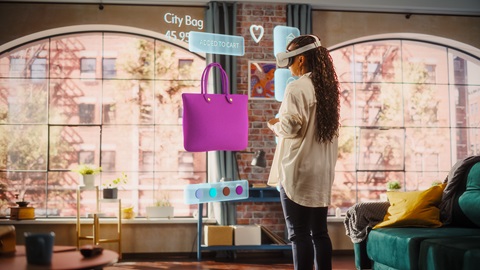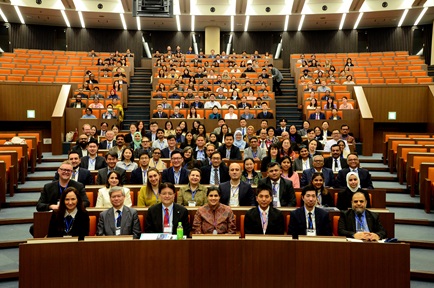SME be nimble, SME be quick
Small and medium enterprises (SMEs) often lack resources and are buffeted by unpredictable events. But their very smallness means they can also be nimble.
By Boh Wai Fong

Small and medium enterprises (SMEs) often lack resources and are buffeted by unpredictable events. But their very smallness means they can also be nimble.
According to our study of more than 350 entrepreneurs in Singapore, this flexibility – both in redeploying resources and changing goals – can lead to innovation.
We highlight four ways:
Recombine Resources
The most skilful entrepreneurs recombine their resources to solve new problems, and are able to imagine new possibilities for what they already have.
For example, the founder of a remittance company, who couldn’t afford to hire more workers, created a mobile app for customers to wire money without queuing at the shop, thereby eliminating an endless queue and chaos on peak periods.
Another SME that offers university application advisory service started off with little expertise but tapped every industry expert, vendor of educational resources and college representative they could, and built up structured processes from scratch.
A start-up wanted to rent iPads to tour companies but there was little demand. Talking to a banker during an event, they struck on the idea of developing an app and renting iPads for paperless conferences. The team developed a prototype within a month, recombining their existing resources, and pitched the idea to the bank, securing their first, and subsequently recurring client, allowing them to launch the service.
Exploit Contingencies
Contingencies - events that are unpredictable and somewhat random - are often part-and-parcel of what entrepreneurs have to deal with. Innovative entrepreneurs turn lemon into lemonade by converting challenges into new opportunities.
For example, an SME was developing an easy-to-use home machine with limited features for older diabetic patients to monitor the condition of their blood vessels. But when the team talked to the patients and nurses at the dialysis centre, they realised that patients were not interested in monitoring their own blood vessels. On the other hand, nurses who were in charge of monitoring the dialysis process were keen on a monitoring device which could alert them of any abnormality. The team quickly changed their target product and market from a simple home device for dialysis patients to a more professional device with a range of features for nurses.
Another example is a company that manufactures temperature sensors and thermowells. They had a temperature sensor which, due to the vibration it caused, generated a significant amount of customer complaints. Such vibrations were common among the products in the market, but the company came up with a new vibration-proof sensor that has drawn new customers. The elimination of vibration also removed other problems that tended to result in customer complaints and servicing, thus improving productivity.
Be Willing to Cannibalise Existing Investments
Those who are more willing to cannibalise existing investments are able to more effectively exploit new contingencies.
For example, a game developer company originally had a grand vision of producing a game that allows the player to progress in a non-linear fashion. As the company developed the product, they realised that nonlinear progress would generate an unlimited number of routes that users would take. This would require the company to develop an endless number of routes and mechanisms within the game. Realising this was unfeasible, the entrepreneur abandoned the project to recombine the existing resources into a new game, which did not allow users to move non-linear ways, but highlighted the strengths of their game mechanics - fast pace and exciting functions. The new game was voted to be launched in a crowd-sourced gaming site (that votes on whether a game should be launched), and even received an award in India.Entrepreneurs need to be flexible in abandoning projects when such an action is called for, regardless of the amount already invested into the project.
In another example, a firm was developing a med-tech device targeted at developing countries. His team, based in the US, was unsuccessful in securing investments from VC funds from the country. In a chance encounter, the entrepreneur met a VC investor based in India, who wished to invest in the company, on the condition that the company moved to India. The company realised that this was a good opportunity to gain the required investments, and be based in a target market. But it meant foregoing the investments in people and networks the team had cultivated in the US. The team decided to take the opportunity, even though it meant that they would need to build a new employee team in India as most of their US employees were not willing to move. It was only because of the company’s willingness to cannibalise its existing investments that allowed the company to move to the next phase of expansion.
Generate Options
While researching ideas, entrepreneurs may develop ideas that are not immediately useful, but might be worth considering in future.
For example, an equipment repair company mooted the idea of developing software to monitor the conditions of customers’ equipment, to facilitate equipment maintenance. However, the cost of developing this software was prohibitive. Nevertheless, he continued to cultivate this option by sending his staff for training in the related domain. When he felt that the technology was sufficiently mature, his company became one of the first to market with such a software.
About the author
Boh Wai Fong is Associate Professor of Information Technology and Operations Management, Nanyang Business School, NTU. Prof Boh specialises in research and training in the areas of innovation management, design thinking and business model innovation.
This commentary was published in TODAY on 24 February 2017.







